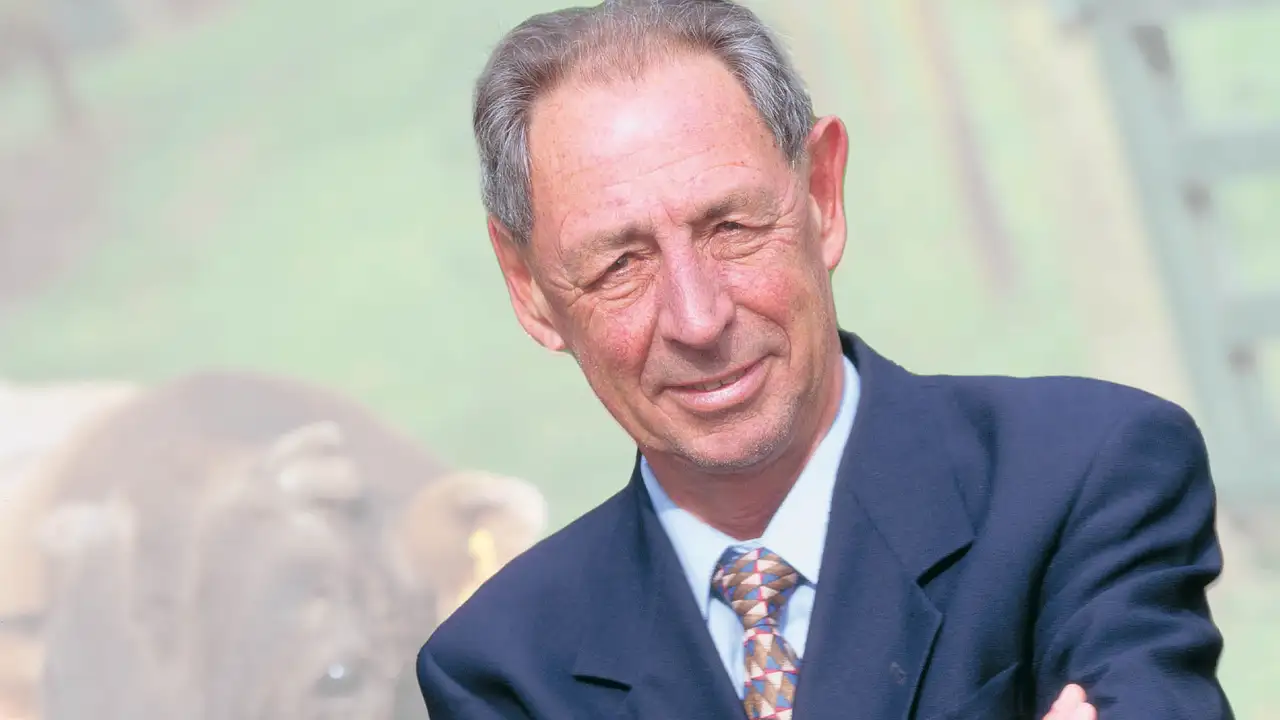Like any successful company, LIC owes much of its solid foundations to a number of key individuals who were integral in moulding the co-operative into what it is today.
Work and Research
Pat joined the New Zealand Dairy Board in 1954 and began working on dairy bull semen research.
This research culminated in the long last liquid semen (1988) that underpins LIC’s genetics business. His focus on genetic improvement within the New Zealand dairy herd remains his legacy.
Pat was instrumental in the establishment of the Sire Proving Scheme (1961), and some of the early animal evaluation models.
Awards
Pat’s contribution to New Zealand was recognised in 1999 with his award of the
Companion of the Queens Service Order.
Pat was also recognised with many other awards, including the inaugural winner of the McMeekan Award (1974), and the inaugural recipient of Fonterra’s Dairy Excellence Lifetime Achievement Award (2003).
The book
In 2004, LIC celebrated Pat’s 50 years of contribution to the New Zealand dairy industry, which included the publication of Puff the Magic Shannon – a tribute to the life and science of Dr Patrick Shannon.
The Shannon Lab and Scholarship
LIC announced the naming of the Shannon Laboratory at Newstead, which coincided with the launch of the Pat Shannon Scholarship.
The scholarship, an annual academic award, goes to high-achieving university students.
At 90 years of age, Pat celebrated his 64th year with LIC. As well as his scientific achievements, Pat was known for his wonderful sense of humour which included many tales of his Uncle Ignateus and Aunty Mary.
Pat is dearly missed but his contribution to the New Zealand dairy industry and LIC will never cease.
Throughout his 36 years within the Herd Improvement sector, Harvey's achievements were considerable. One of his key highlights was to widen the pool of cows that sires could be selected from, and thus increase the rate of, and opportunity for, genetic gain. Harvey always believed the engine room to the breeding programme was a successful sire-proving scheme and he championed this strongly over many years. This has been the cornerstone of LIC’s success with genetics.
Early Years
Harvey was raised on his family’s 118-acre dairy farm in Midhurst where his love of the industry began. He pursued this passion and studied Agricultural Science and graduated from Massey University in 1965, before later that year joining New Zealand Dairy Board’s Herd Improvement Department as a Consulting Officer.
Work Years
During his 12 years as a Consulting Officer Harvey recognised that New Zealand dairy farmers were focused on generating the best dollar return from their farming activities.
Their ideal cow would graze for long periods, walk to and from the shed without difficulty, have a fabulous temperament, carry good udders which cupped easily and stayed on - but above all, would be the most-efficient converter of feed into milk solids. To this day, these qualities remain highlighted by farmers as important features of the modern dairy cow.
Harvey’s work included finding a line between maximising genetic gain and the satisfying the traditional farmers' needs (for type and conformation breeding qualities, for example). Harvey balanced the needs of what geneticists in the lab were aiming for, with the traditional needs of farmers.
Harvey: “One of my greatest pleasures when inspecting bull mothers was identifying what I called Clayton’s cows, the ones farmers didn’t know they had. I used to delight in telling farmers about these cows; you know, the ones which are always first in the shed, which calve and milk with no problems, have wonderful temperaments, and udders, and never get mastitis. They’d come in and go out each day and never cause any bother, and it was often only when I approached the farmer asking for them as potential bull mothers that the farmers realised just how good they were!”

